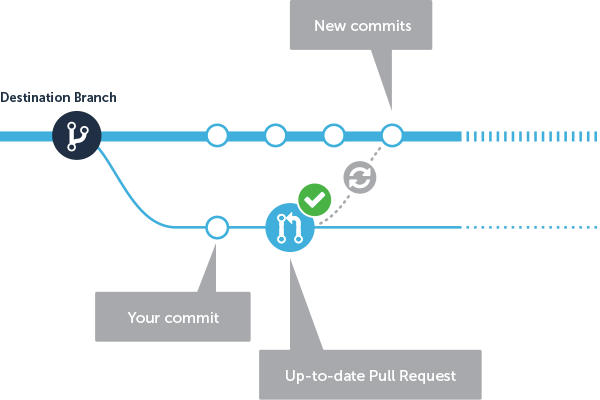
For example, if you need to push a branch named feature to the origin remote, you would execute the following query. You can simply run a plain git push or git pull without any further options! The tracking relationship saved the source/target branch and the exact remote so that it can be looked up in further interactions. In this section, we will learn using examples how git push -force function works with a remote branch, origin master/main and git push force with -lease. In order to push a Git branch to remote, you need to execute the git push command and specify the remote as well as the branch name to be pushed. But here's a brief explanation: such a tracking relationship makes any future "push" and "pull" operations very easy.
Git push branch to remote how to#
The article " How to Set Upstream Branch in Git" explains this in detail. Lastly, run this command to list all local and remote Git branches and verify that the renaming was successful: git branch -a. Then, rename the branch by running: git branch -m old-name new-name. Please mind the "-u" option: it establishes a "tracking relationship" between the existing local and the new remote branch. Alternatively, you can rename a local branch by running the following commands: git checkout master. Now, with the correct local branch checked out, you can publish it on a remote repository - thereby "creating" it on that remote: $ git push -u origin You can push your local branch to a new remote branch like so: git push origin master:test (Assuming origin is your remote, master is your local branch name and test is the name of the new remote branch, you wish to create. It looks like an arrow that goes upwards. To push the commit from the local repo to your remote repositories, run git push -u remote-name branch-name where remote-name is the nickname the local repo.

The above image displays the list of active branches after deleting. Consider the below image: It is a list of active branches of my remote repository before the operating command. I have deleted my remote branch edited from the repository. (2) Push the Local Branch to the Remote Repository Next, open the project in Fork and click the Push button. In the above output, the git push origin command is used with -delete option to delete a remote branch. If you want to use a different name for the remote branch, append the remote name after the. For example, if you have a local called new-feature, if you push the local branch it will create a remote branch new-feature as well. If such a local branch doesn't yet exist, you can easily create it: # To create a new local branch. By default, git pushes the local branch to a remote branch with the same name.


If you already have such a local branch at hand, you can simply check it out: $ git checkout As an example, you usually run git push origin. The git push command takes two arguments. As already said, creating a remote branch actually starts on the opposite end: in your local Git repository! You need to make sure you have a local branch that represents a state you want to push to the remote. Use to push commits made on your local branch to a remote repository.


 0 kommentar(er)
0 kommentar(er)
